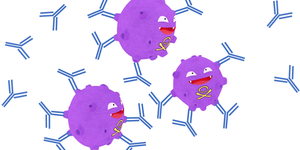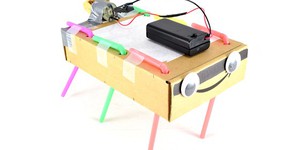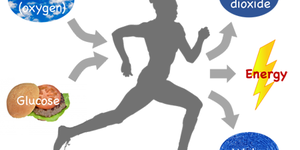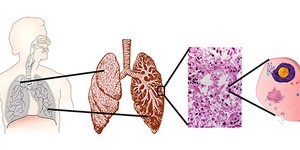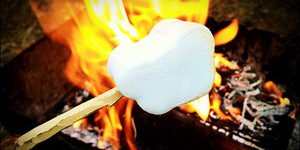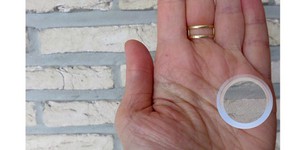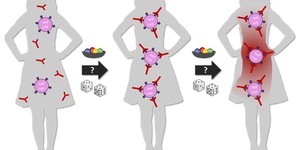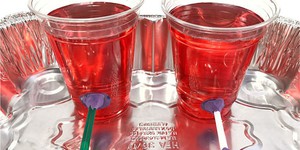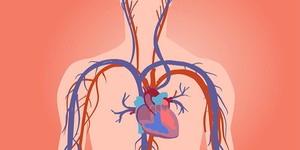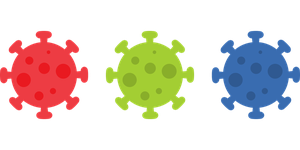Human Biology & Health Lesson Plans (19 results)
Isn't the human body incredible? From the complex systems that make it work to the numerous ways we're able to cure illnesses, there are so many fascinating subjects to study when it comes to human biology and health. Are you interested in subjects like how the body works, how best to keep it working, and how to cure everything from a common cough to cancer?
|
Select a resource
Sort by
|
Lesson Plan
Grade: 6th-8th
4 reviews
What happens when you get food poisoning or the flu? How does our body fight an infection when we get sick? In this lesson, students will build a model of our immune system to find out how our body responds to invading bacteria or viruses that cause diseases and to investigate the role of memory cells.
Read more
NGSS Performance Expectations:
Featured
Lesson Plan
Grade: 6th-8th
7 reviews
Junkbots are easy-to-build robots that you can make using a simple circuit and some recyclable materials. In this lesson, your students will learn about engineering design as they compete to build the fastest robot. No previous robotics experience is required!
Read more
NGSS Performance Expectations:
Lesson Plan
Grade: 6th-8th
6 reviews
In this fun lesson plan, students will measure how the amount of carbon dioxide in their exhaled breath changes with exercise levels. Carbon dioxide is a product of cellular respiration, so the lesson highlights how breathing is connected to cellular respiration and energy production in our body. Students will make the measurements using a simple colorimetric reaction that can easily be assessed visually.
Read more
NGSS Performance Expectations:
New
Lesson Plan
Grade: 6th-12th
Create a two-part system for filtering greywater. Teams will focus on communication and systems engineering as they build separate components to filter solid and liquid waste and then combine them into one device.
Learning Objectives
Students will:
Consider the potential effects of drought and how greywater could be part of the solution.
Design a system for filtering out solid waste or liquid waste.
Consider effective communication strategies with their team.
Collaborate on their design…
Read more
Lesson Plan
Grade: 6th-8th
3 reviews
The human body is complex! In this lesson, it is broken down into smaller, manageable parts. Students will build a lung model and discover how different parts of the respiratory system work together to make breathing possible. Next, they will discuss how this system works together with other systems in the body so oxygen can reach every cell of the body. While students perform these explorations, they will realize that multicellular organisms consist of systems, which are a collection of organs…
Read more
NGSS Performance Expectations:
Lesson Plan
Grade: 6th-8th
4 reviews
Your students might know that they can burn calories, but do they know what a calorie really is? In this fun lesson plan, your students will measure the energy content of food by literally burning it using a device called a calorimeter that they will design and build themselves. This will get your students thinking about the chemistry of energy transfer as well as good nutrition, and gives a whole new meaning to the phrase "burning calories!"
Read more
NGSS Performance Expectations:
Lesson Plan
Grade: 6th-8th
4 reviews
How is it possible that our eyes can see things that are not really there? In this fun lesson plan, your students will explore how our vision works with the help of two short experiments that involve some fascinating optical illusions. Let your students discuss why they see a hole in their hand, or why they see colors that were never there, and let them construct their own explanations.
Read more
NGSS Performance Expectations:
Lesson Plan
Grade: 9th-12th
2 reviews
Can genetic or environmental factors affect our chances of getting a certain disease? In this activity, your students will model how an existing predisposition can impact the probability of developing an autoimmune disease using dice and M&M's® candy!
Read more
NGSS Performance Expectations:
Lesson Plan
Grade: 4th
3 reviews
Why is it important to eat healthy and exercise? In this hands-on lesson plan, students will build a simple model to explore the effects of plaque buildup in arteries. The model allows them to demonstrate what happens to blood flow when heart disease narrows a person's arteries.
Read more
NGSS Performance Expectations:
Lesson Plan
Grade: 4th
1 review
Breathing occurs effortlessly, but did you ever wonder how we breathe? In this lesson, students will make a model to discover how air effortlessly flows in and out of our lungs. Next, students will compare lung breathing to other ways of breathing to discover reasons why humans might have developed lungs.
Remote learning: This lesson plan can be conducted remotely. Students can work individually and independently during the Explore section guided by the video and the Student Worksheet. A set…
Read more
NGSS Performance Expectations:
Video Lesson
Grade: 4th
5 reviews
In this lesson, students will learn about the circulatory system and build a simple model to investigate blood flow in different types of blood vessels.
Read more
NGSS Performance Expectations:
Lesson Plan
Grade: 6th-12th
4 reviews
We hear about COVID-19 variants all the time, but what is a virus variant, how do they come about, and why do they matter? Students will explore these question and more in this lesson plan. They will use SimPandemic, a free online tool, to model what COVID-19 outbreaks look like when communities are exposed to different COVID-19 variants and understand how genetic mutations in a virus can lead to functional changes.
Read more
NGSS Performance Expectations:
|
Explore Our Science Videos
Magic Triangles - Fun Math Puzzles with Increasing Difficulty
Making Ice Cream with Science
Gear Ratio for the Junior Solar Sprint

